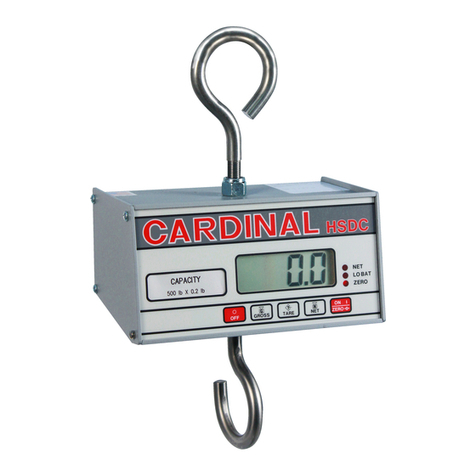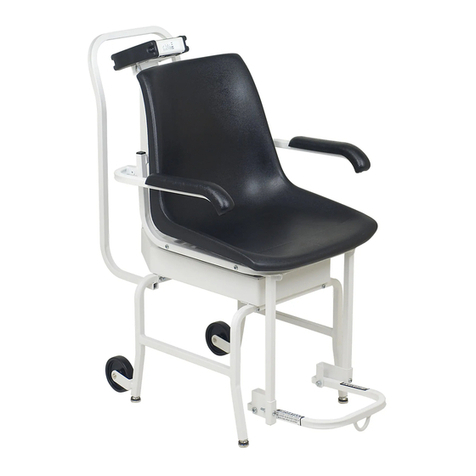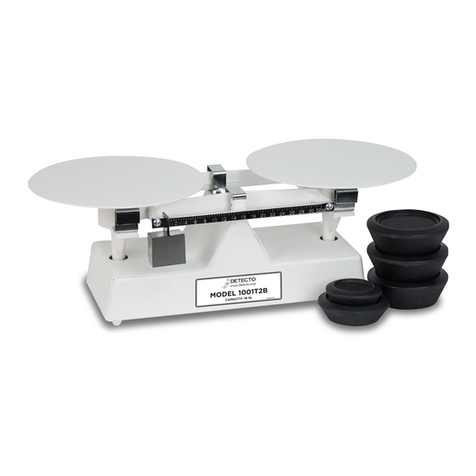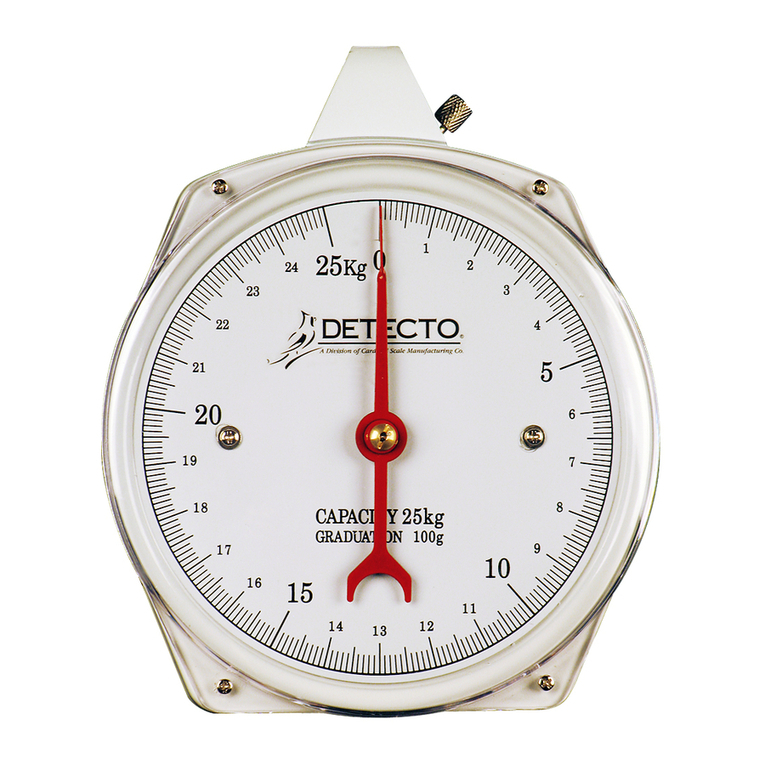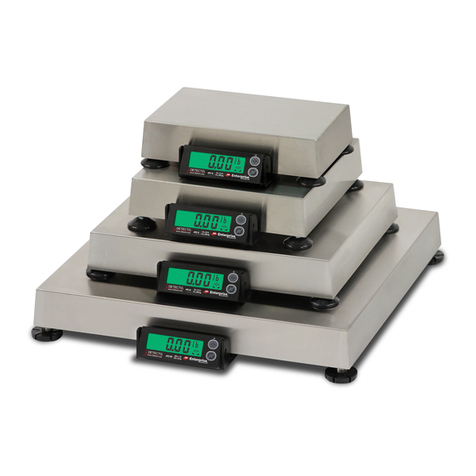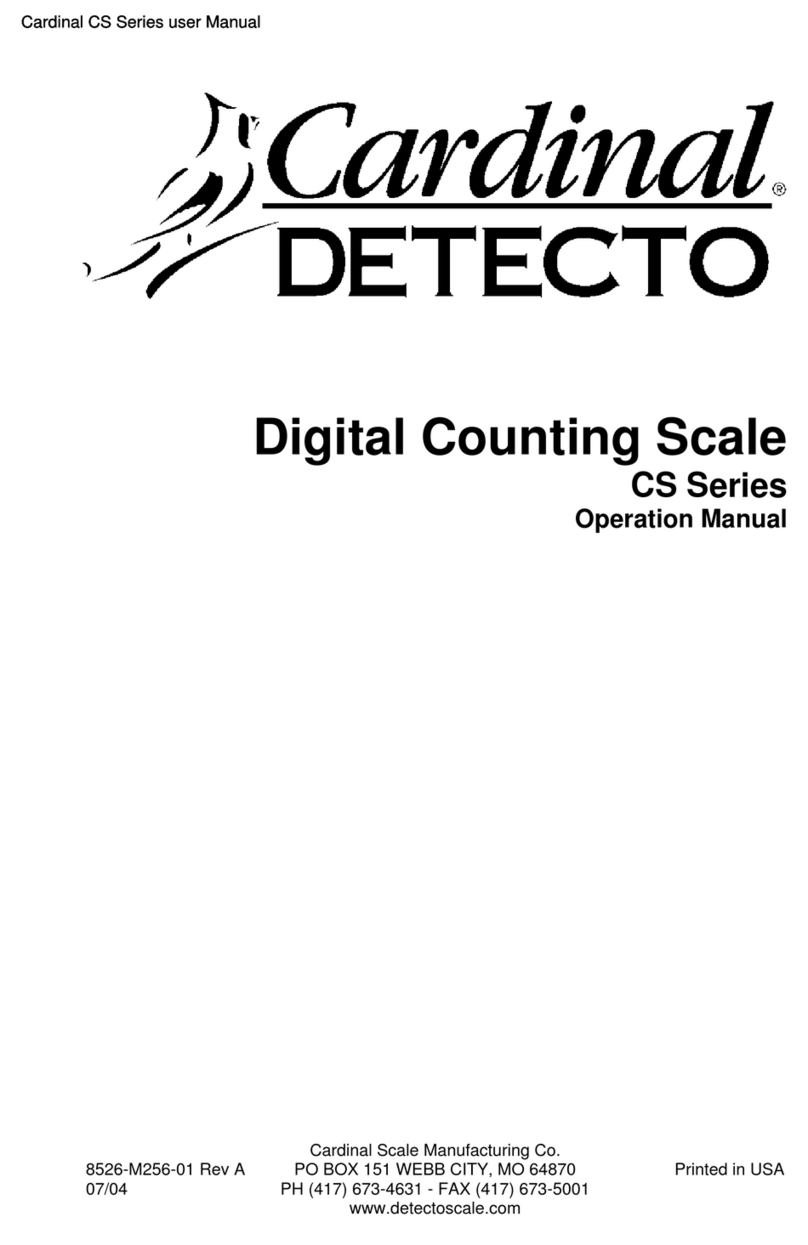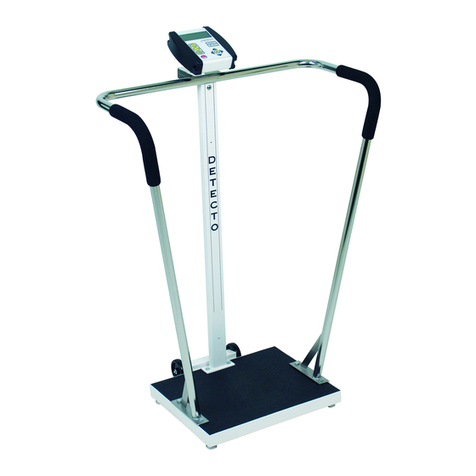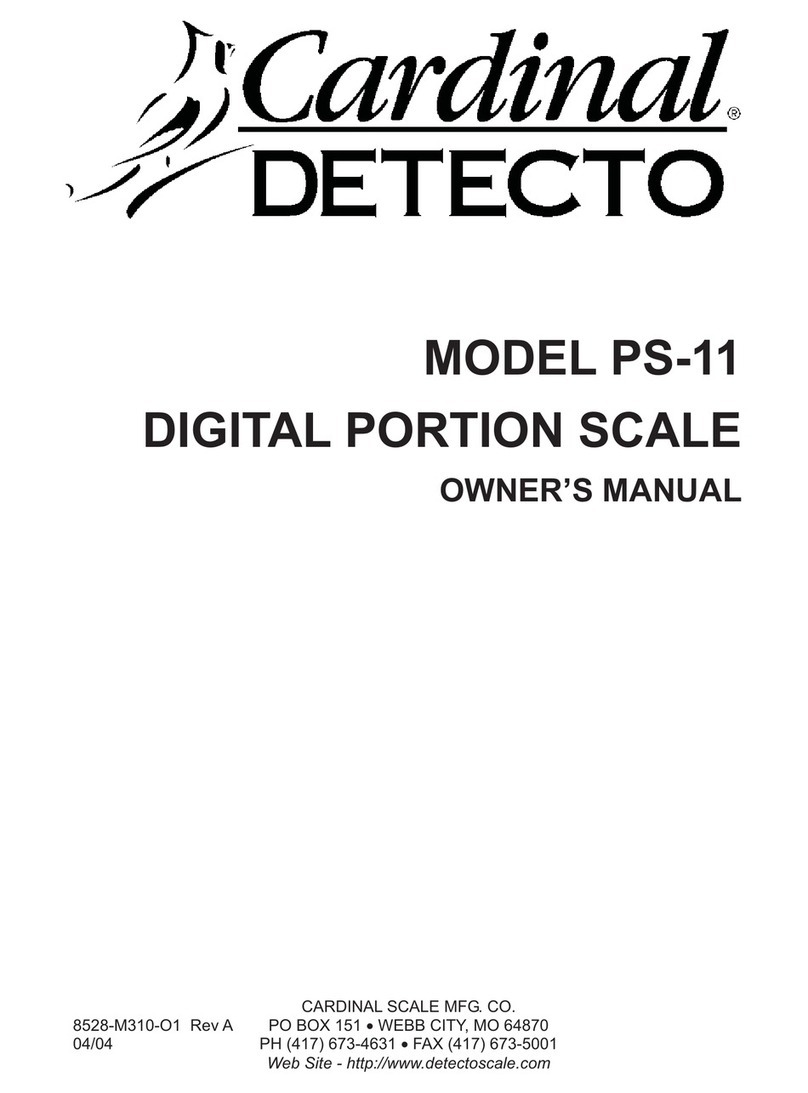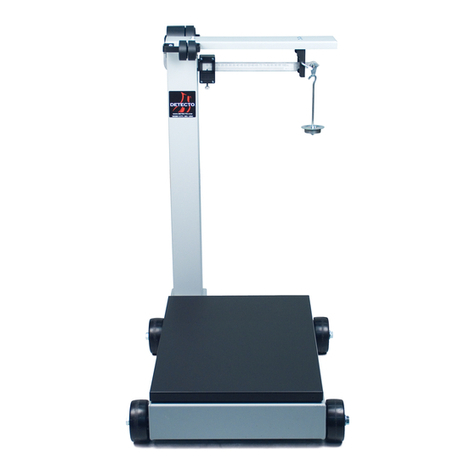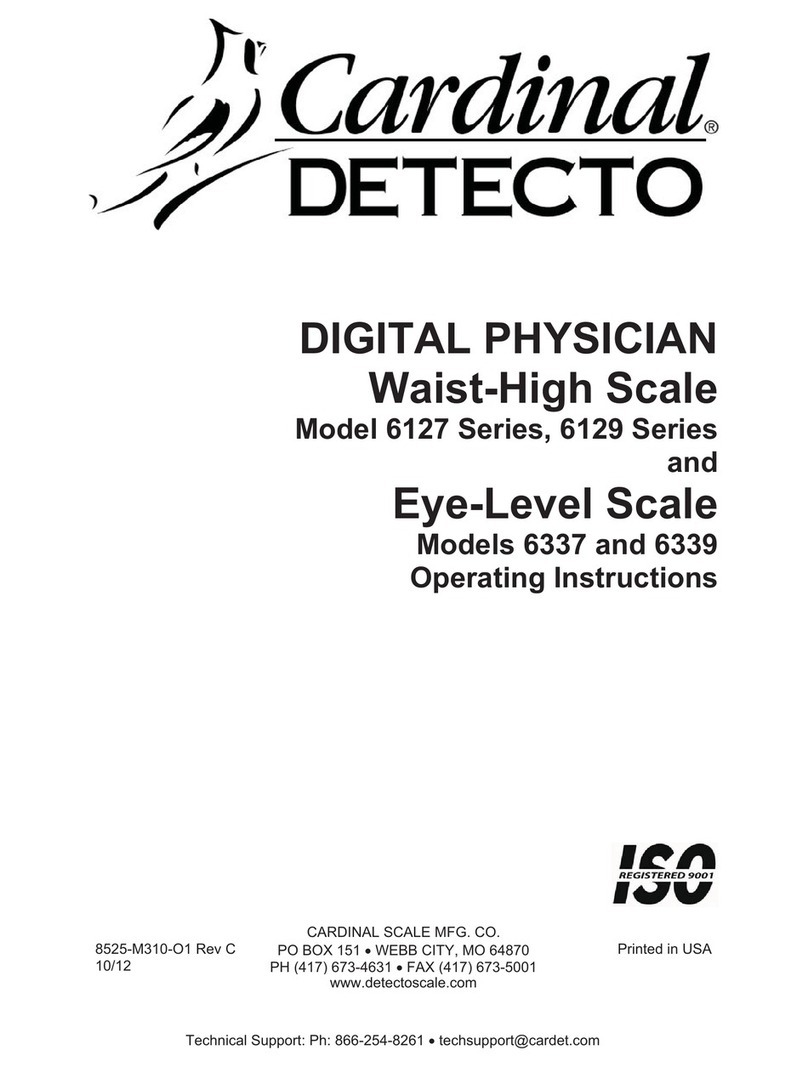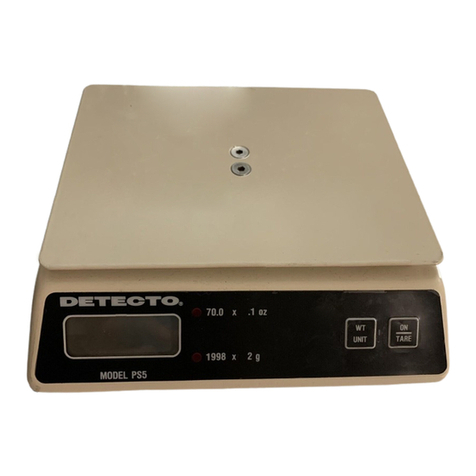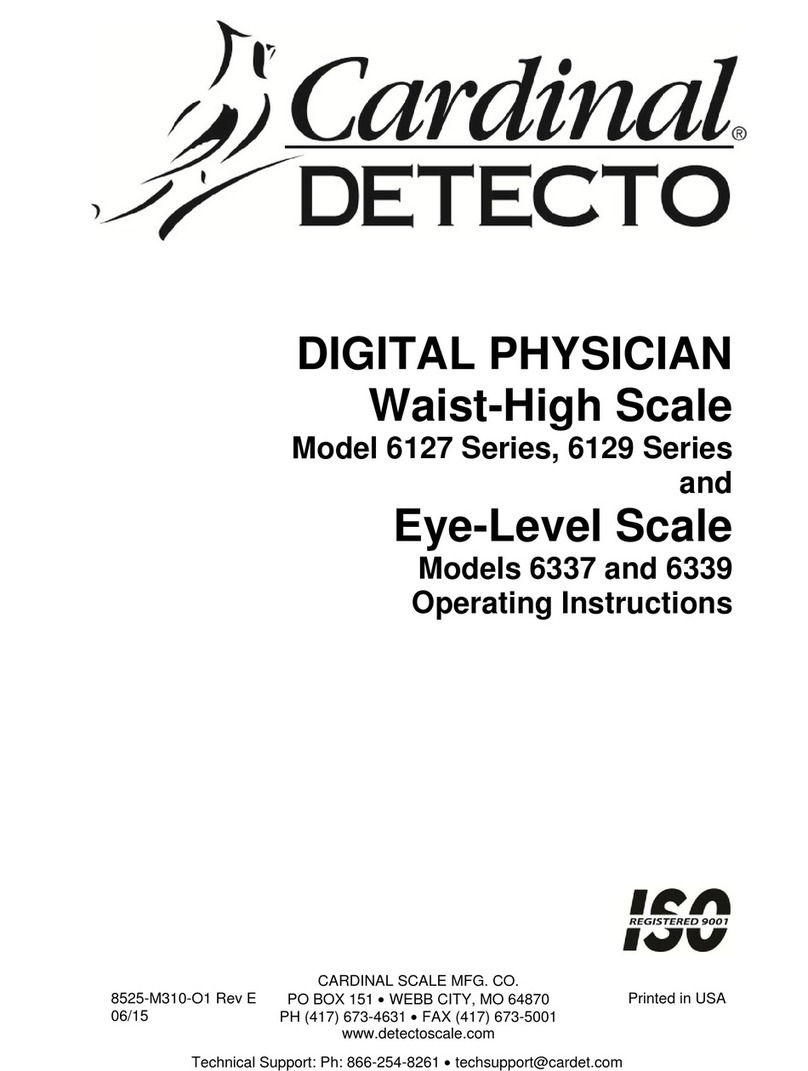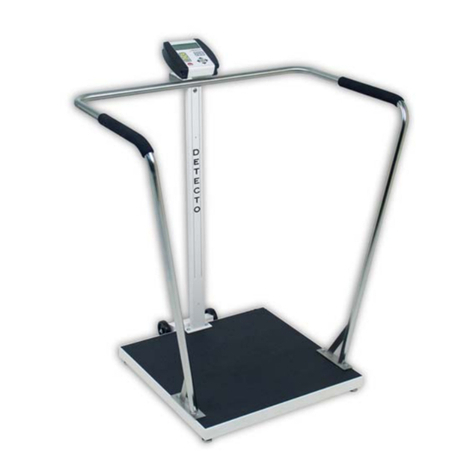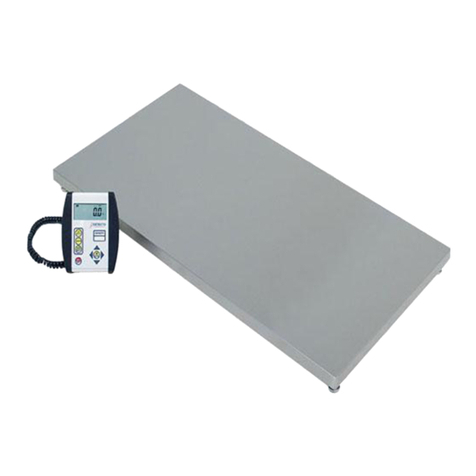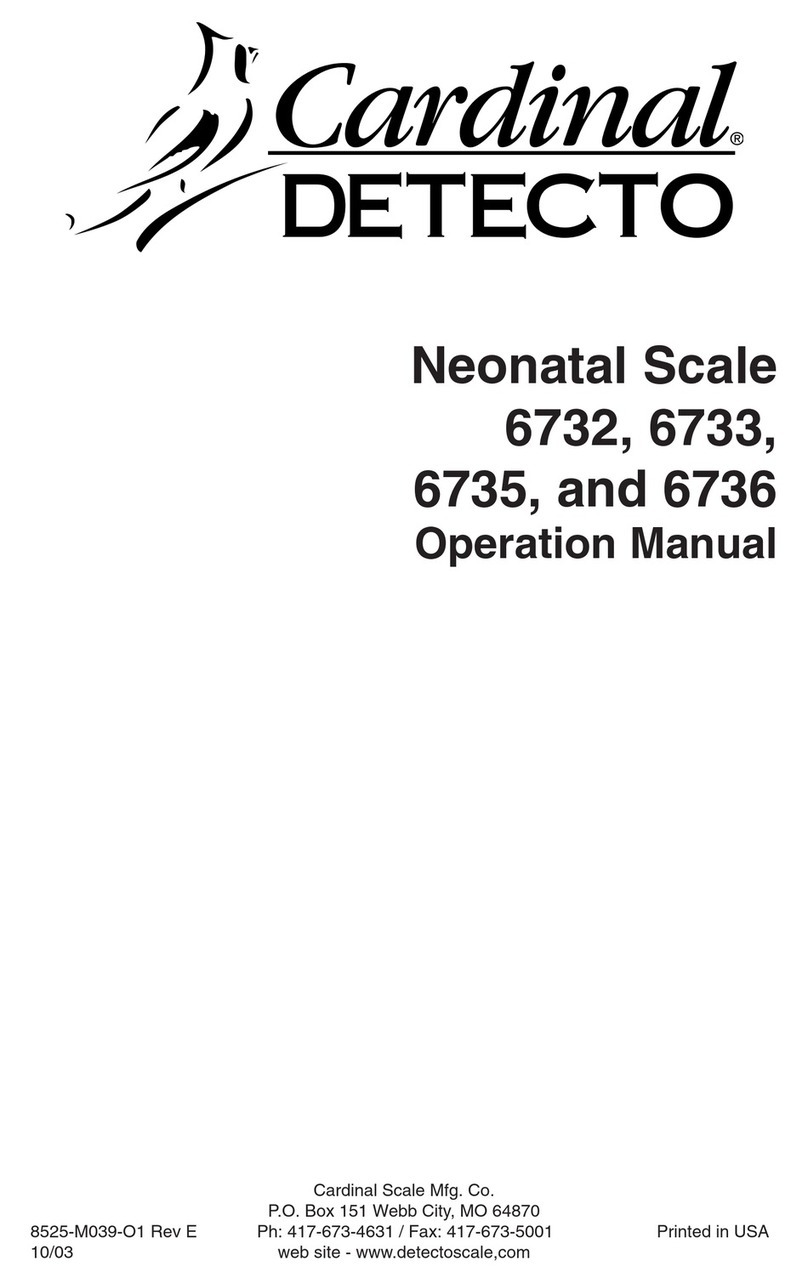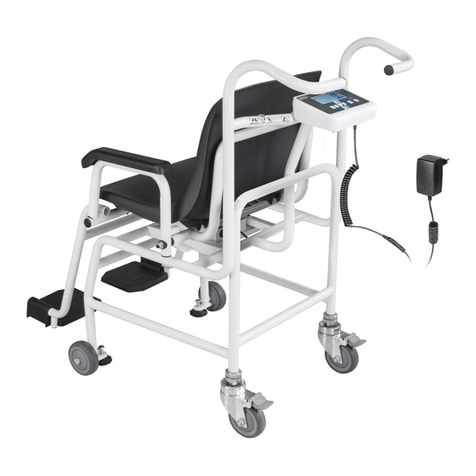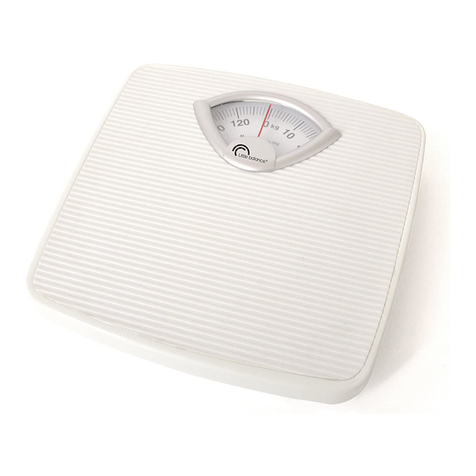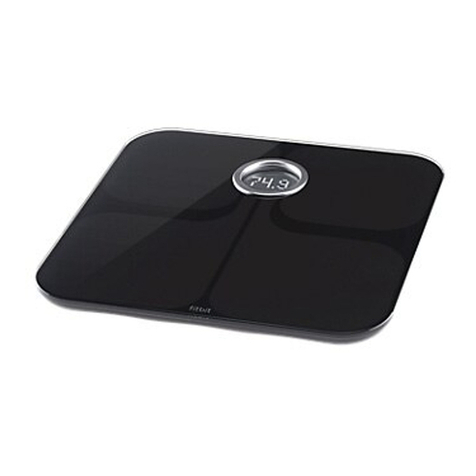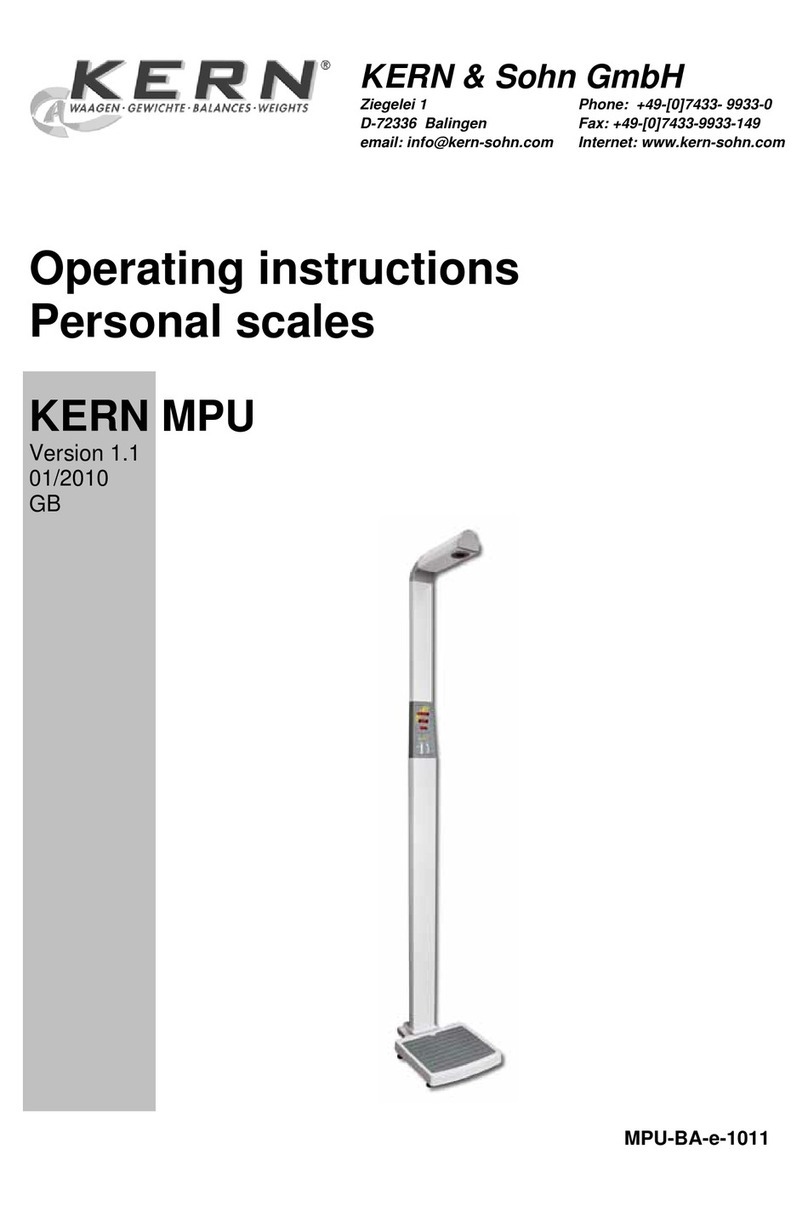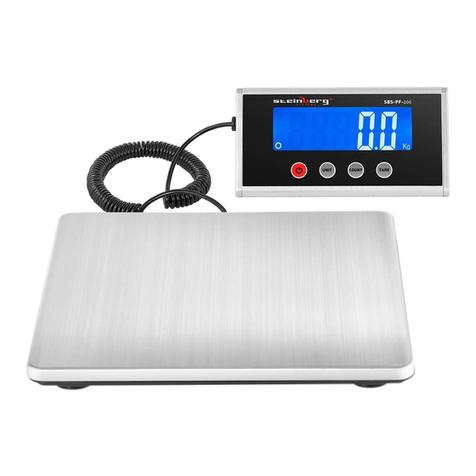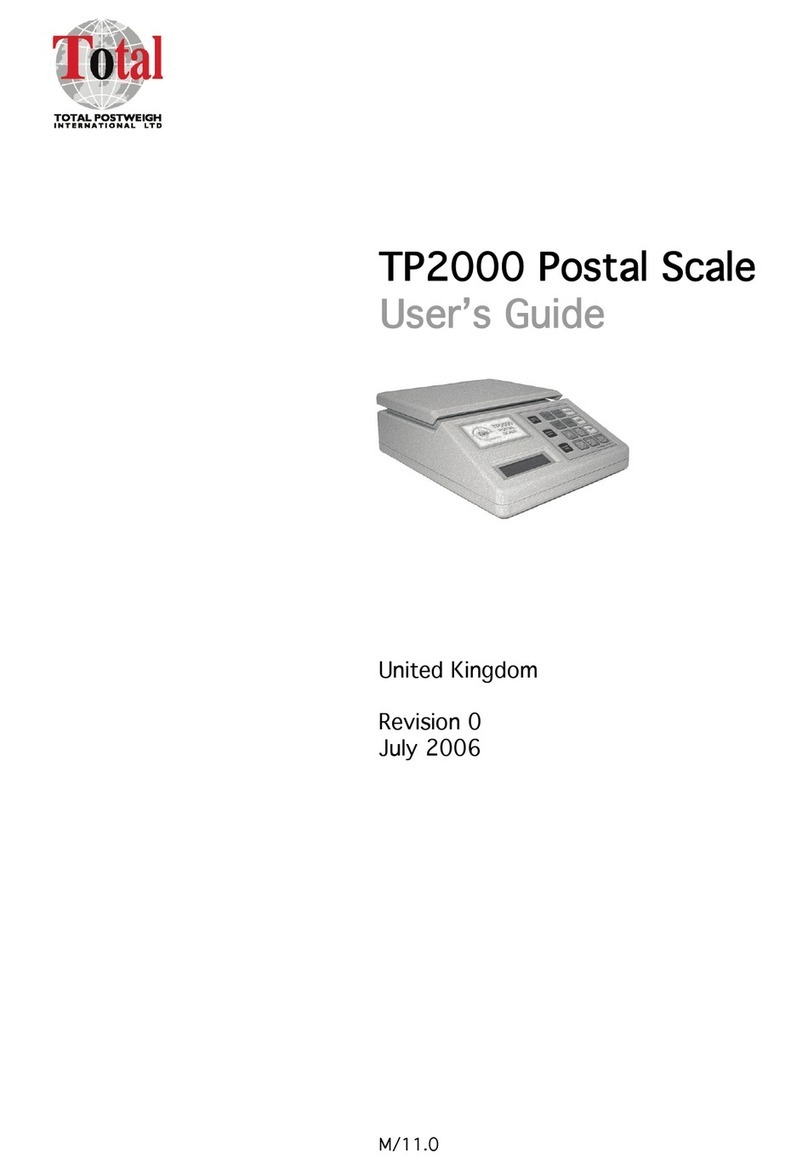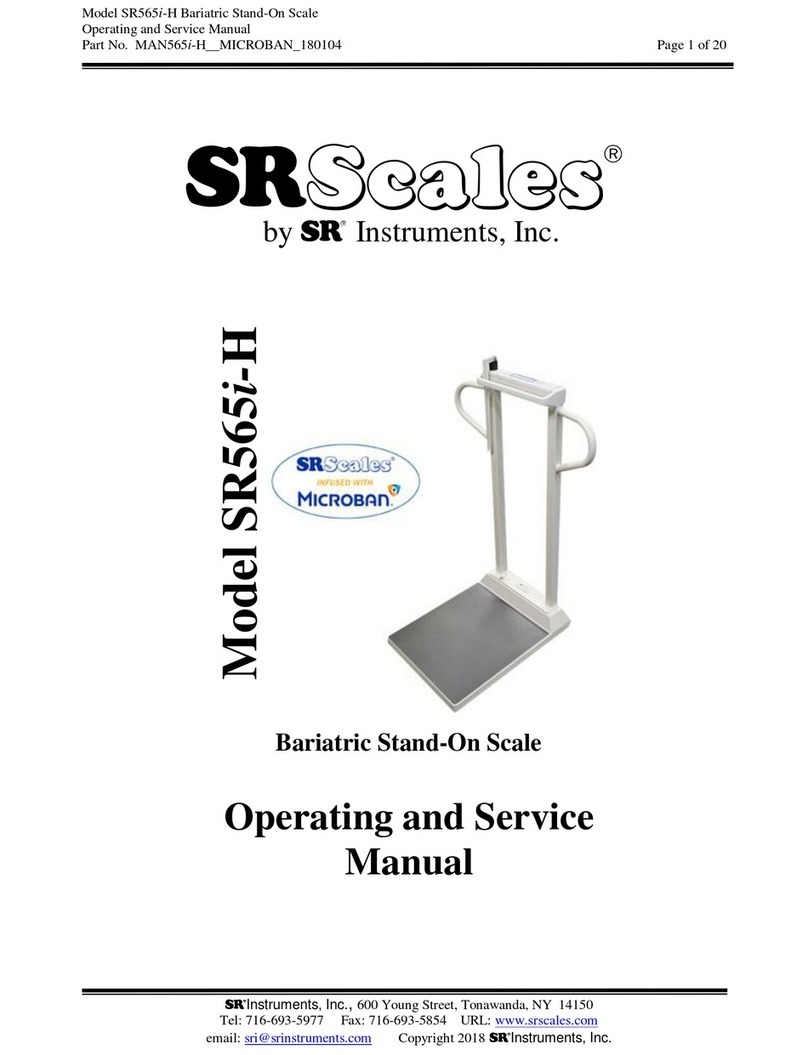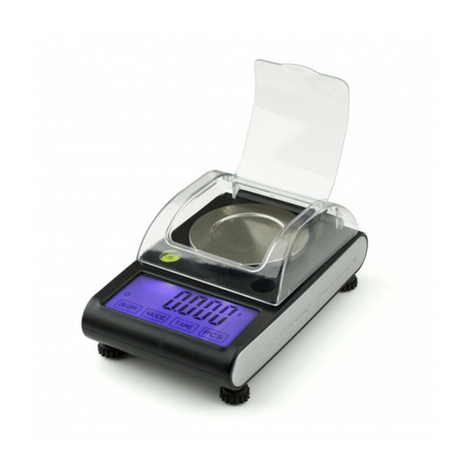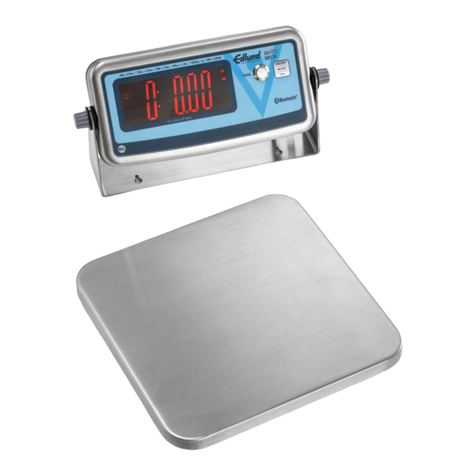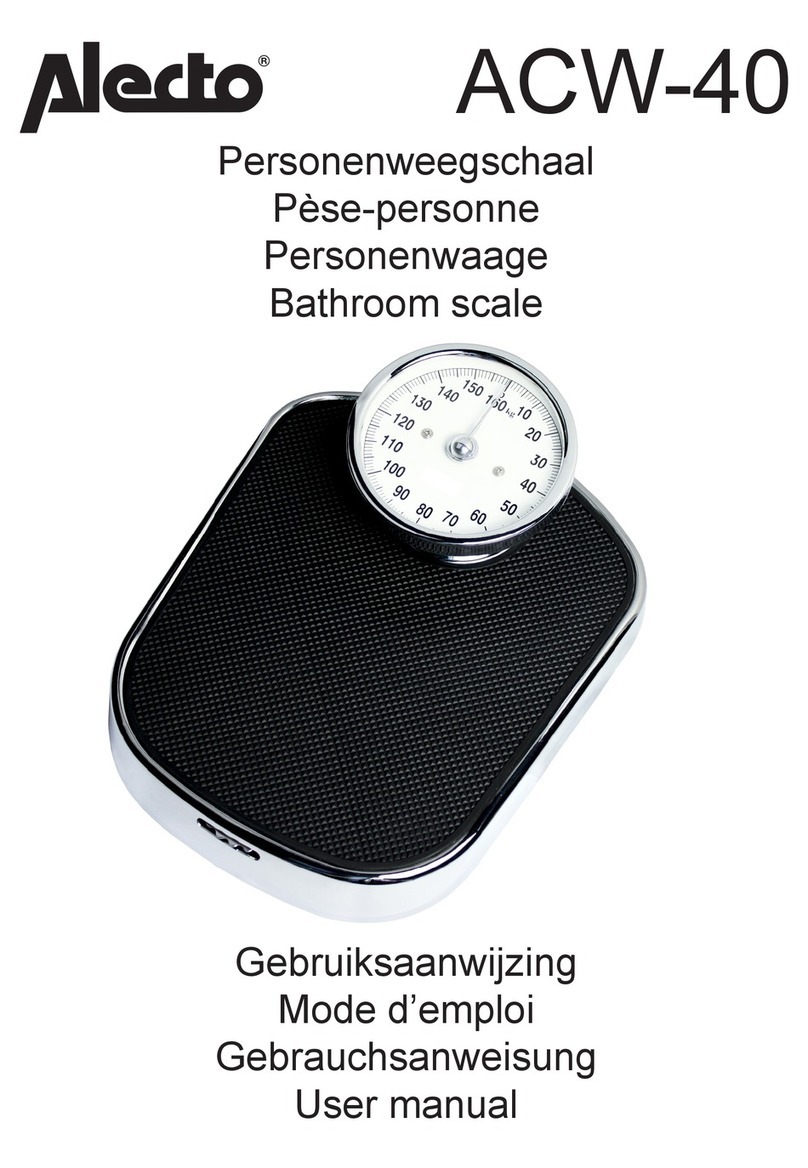
TABLE OF CONTENTS
INTRODUCTION ......……………………………………………………………………………. 1
SPECIFICATIONS ………………………………………………………………………………. 1
NOTES ON SAFETY ...........……………………………………………………………………. 3
EDUCATION INFORMATION ….…………………………………………………………….… 5
PRODUCT DESCRIPTION .……………………………………………………………………. 9
PD150 …………………………………………………………………………………………….. 10
Unpacking ……………………………………………………………………………………. 10
Assembly ……………………………………………………………………………………... 10
Quick Start ……………………………………………………………………………………. 10
Placing the Scale …………………………………………………………………………..… 11
Placing the Display ….……………………………………………………………………..… 11
Wall Mounting ……………………………………………………………………………. 11
Desk or Table Mounting …………………………………………………………………. 13
PD350 …………………………………………………………………………………………….. 14
Unpacking ....…………………………………………………………………………………. 14
Assembly ..………………………….………….…………………………………………...... 15
Placing the Scale …………………………………………………………………………..… 16
Quick Start ………………………………………………………………………………….… 16
PD350DHR ..……………………………………………………………………………………... 17
Digital Height Rod Installation ……………………………………………………………… 17
PD350MHR ...…………………………………………………………………………………….. 19
Mechanical Height Rod Installation ………………………………………………………… 19
BATTERY OPERATION ...…………...…………….…………………………………………… 21
Installation/Replacement .………………….……………………………………………..… 21
Low Battery …………………………………………………………………………………… 22
Automatic Shutoff ……………………………………………………………………….…… 22
Sleep Mode …………………………………………………………………………………… 22
OPTIONAL AC POWER ADAPTOR .……….………………………………………………… 22
OPERATION …………………………………….……………………………………………..… 23
Keypad Functions ………………………….………………………………………………… 23
Annunciators ……………………………….………………………………………………… 25
Weighing Only .…..…………………………………………………………………………… 27
Hold Function ............................................................................................................... 28
Tare Function ................................................................................................................ 28
Height Measuring Only with Digital Height Rod .................................................................. 29
Printing Function ........................................................................................................... 29
BMI Measure with Digital Height Rod .....….....………………………………………………… 30
BMI Measure with Mechanical Height Rod or No Height Rod .....….....…................................. 31
Body Fat and Total Body Water Estimation with Digital Height Rod .....…........................... 32
Body Fat and Total Body Water Estimation with Mechanical Height Rod or No Height Rod ..... 34
Memory and Recall Function ………..............……..……………………………………… 36
SETUP .........................................……………………………………………………………… 38
CALIBRATION ..……….………………………………………………………………………… 41
EVENT COUNTER ……………………………………………………………………………… 43
OUTPUT FORMATS .................................………………………………….………………… 44
PROBLEM-SOLVING ….........................……………………………………………………… 45
CARE AND MAINTENANCE …...……………………………………………………………… 45
0044-M380-O1 Rev A yProDoc BFA Series 3

